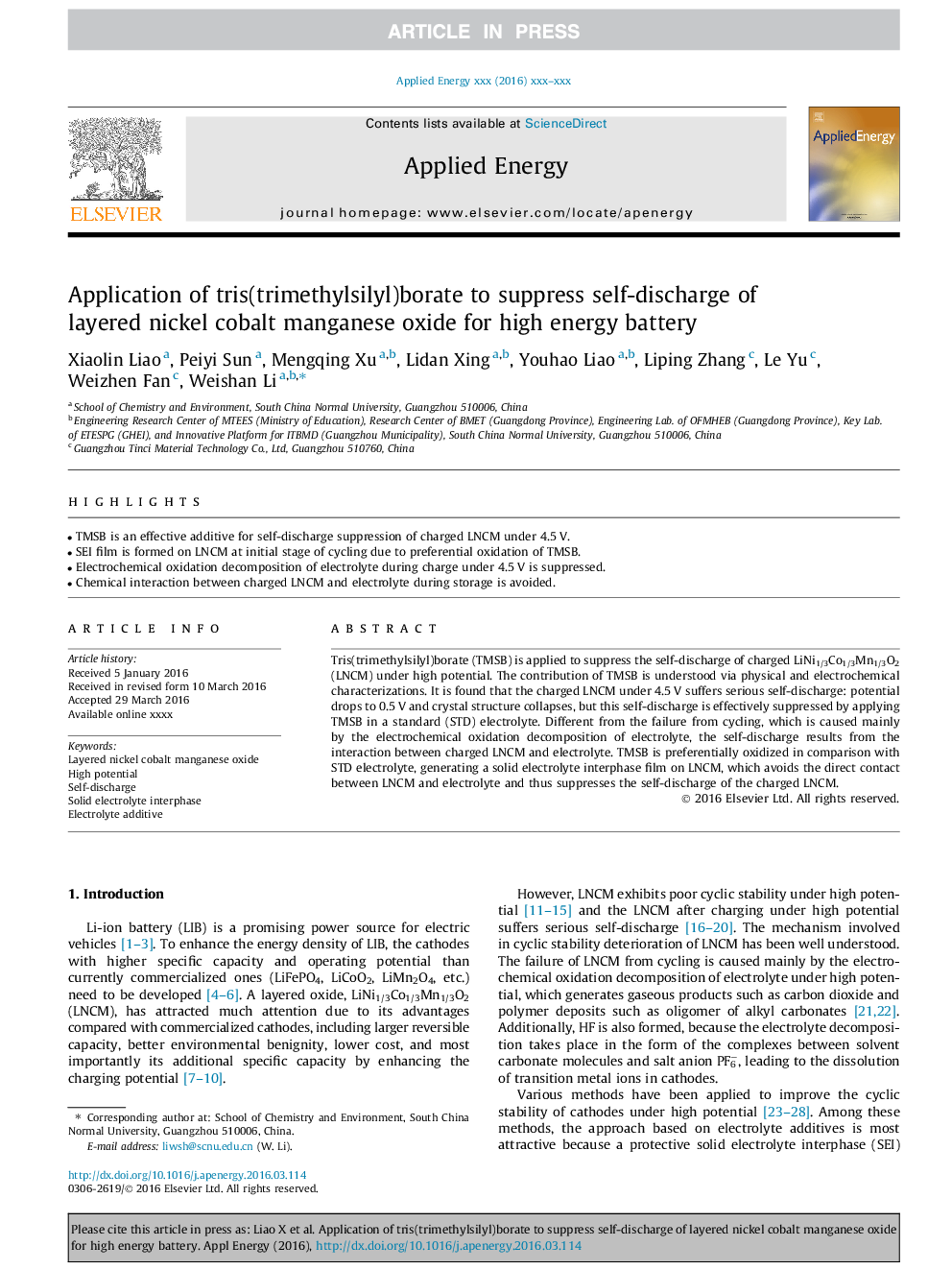| Article ID | Journal | Published Year | Pages | File Type |
|---|---|---|---|---|
| 6683051 | Applied Energy | 2016 | 7 Pages |
Abstract
Tris(trimethylsilyl)borate (TMSB) is applied to suppress the self-discharge of charged LiNi1/3Co1/3Mn1/3O2 (LNCM) under high potential. The contribution of TMSB is understood via physical and electrochemical characterizations. It is found that the charged LNCM under 4.5Â V suffers serious self-discharge: potential drops to 0.5Â V and crystal structure collapses, but this self-discharge is effectively suppressed by applying TMSB in a standard (STD) electrolyte. Different from the failure from cycling, which is caused mainly by the electrochemical oxidation decomposition of electrolyte, the self-discharge results from the interaction between charged LNCM and electrolyte. TMSB is preferentially oxidized in comparison with STD electrolyte, generating a solid electrolyte interphase film on LNCM, which avoids the direct contact between LNCM and electrolyte and thus suppresses the self-discharge of the charged LNCM.
Related Topics
Physical Sciences and Engineering
Energy
Energy Engineering and Power Technology
Authors
Xiaolin Liao, Peiyi Sun, Mengqing Xu, Lidan Xing, Youhao Liao, Liping Zhang, Le Yu, Weizhen Fan, Weishan Li,
